(first posted 6/22/2013) Like Jim Cavanaugh — or even more so, if that’s possible — I found the 1980 Mark VI to be rather pathetic: a rolling monument to bad proportions embellished by kitsch. OK; some of that is subjective, and I’m not going to even argue about its many details, like the silly fake front fender “gills”. Beyond the details, there’s a very fundamental problem with the Mark VI: it’s riding on a too short of a wheelbase. That alone makes it look like a kit car: The Fiberfab Mark VI: build your own Continental on a VW Beetle chassis!
As I was looking at this picture late last night, I decided to do a little research to see if the Mark VI’s relationship of wheelbase to overall length (overhang ratio) really was much worse than average, and compare it to other cars. By the time I decided to finally go to bed, I hadn’t yet found a challenger; maybe you can. But here are the numbers so far, as well as those of some competitors:
The Mark VI has a 114.4″ WB (Wheelbase), and 216″ TL (Total Length). By subtracting the WB from OL, we have 101.6″ of OH (Overhang). Dividing that by the TL gives us a 47% OHR (OH Ratio), or in other words almost half of the Mark VI is hanging past its wheels. Is there another car with as much?
The Mark VI’s nearest competitor is the E-Body Eldorado. Just looking at the two in the front is revealing: you would expect the FWD Eldo to have its front wheels set pretty far back, yet the Mark’s are even further back.Yet the Eldo’s OHR is only 44%, a number that as we’ll see represents about the outside edge of what is acceptable to the eye in that regard. Of course that wasn’t the only reason the Eldorado was profoundly better looking than the Mark VI, but it’s a good place to start. And the Eldo outsold the VI by a huge ratio (82k to 11.5k in 1982). Ford essentially handed the luxury car market back to GM with its poorly executed 1980 Lincoln models. Of course, that would change in 1985…
The front wheel location is actually the hallmark of all the Panthers: it had two inches less wheelbase than the GM B-Body, and it appears all of that or more is the result of the front wheels being further back. And the Mark VI is basically a Crown Vic or Grand Marquis (same wheelbase) with lots of additional overhang, especially at the front. The 1980 LTD has a 45% OHR (MGM pictured).
Jim mentioned the Chrysler Cordoba as an example of a downsized luxury coupe that worked much better than the Mark VI. Given its shorter wheelbase, I wondered if it might equal or top the Mark: 112.7″ WB; 209.8″ TL = 46% OHR. That’s getting mighty close, but even a percent or two in the OHR makes a noticeable difference to the eye. As well as the fact that the Cordoba just wasn’t nearly as boxy as the Mark.
Just for perspective, I decided to toss a wide net of other cars to compare, including the monstrous 1958 Lincoln with its huge rear overhang. But with a 131″ WB and 229″ TL (only 13″ longer than the Mark VI, it turns out!), it has a rather modest OHR of 43.7%.
New cars are often criticized for their long front overhangs, partly due to FWD as well as crumple zones. The 2013 Lincoln MKS is one of the longest sedans sold today, so let’s do the numbers: 112.9″ WB; 205.6″ TL = 45% OHR. Right in the typical range. Of course, modern cars are a lot taller, so their overall proportions are very different than from the past. But even if a car has a very large front overhang, as long as the back overhang isn’t too severe, it still doesn’t look ridiculous (in terms of OHR).
GM wasn’t totally innocent of this issue though. The redesigned “whale” 1992 B-Bodies kept the 116″ WB, but added length as well as a lot of width. With a 115.9″ WB and 214.1″ TL, the Caprice has a 46% OHR. Precarious.
The Fleetwood Brougham added inches to both wheelbase and length, and ended up with a similarly-precarious 46% OHR. In this case, it’s very rear-heavy, with that massive roof. The wheelbase (121.5″) just isn’t enough, and the rear wheel looks to be 6″ too far forward.
I thought of the 1990-1991 Riviera, which was the beneficiary of both front and rear extensions to make it look more…something. With a 108″ WB and 198.3″ TL, it has a 45.5% OHR. That’s pushing it, obviously.
And I was pushing it last night, and had to stop there. I suspect there may be others out there that might challenge or top the Mark VI, and I leave that to you to find them. And here’s the perfect resource: the automobile-catalog.com is an awesome resource for specifications. Just enter the year, make and model in their search box, and they’ll take you there.
Undoubtedly, there are going to be some oddballs out there with wild OHR, but we are mostly talking about full-sized cars and such. But finding a car that has over 100″ of total overhang like the Mark VI alone is going to be a challenge. But bring it on…












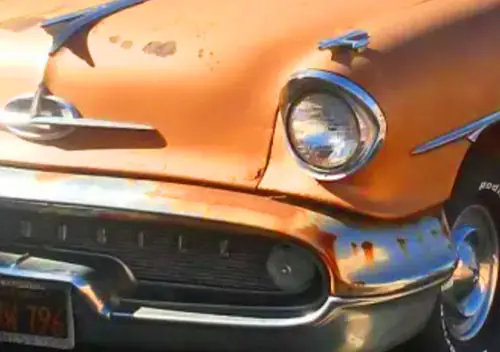
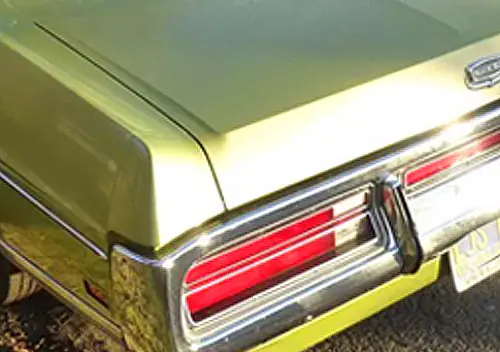
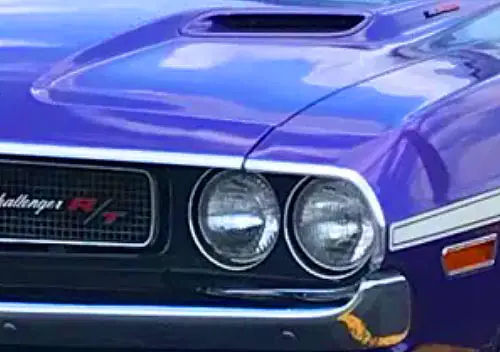

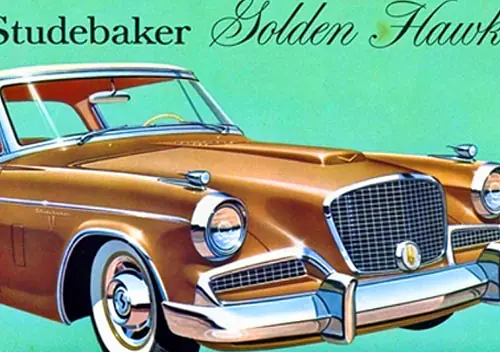
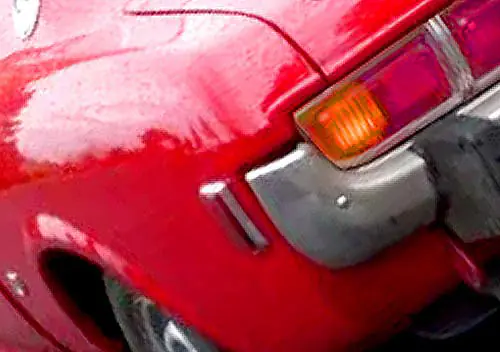

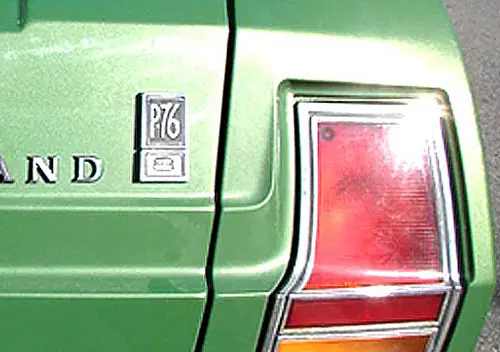
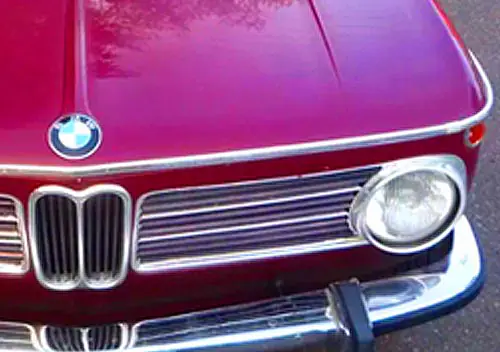
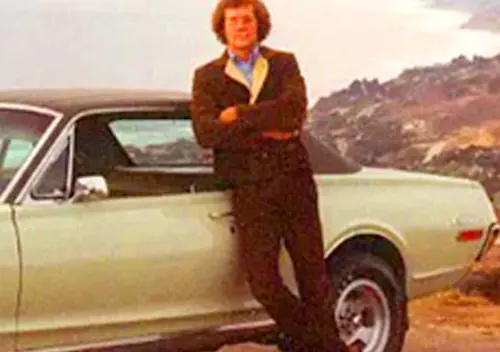

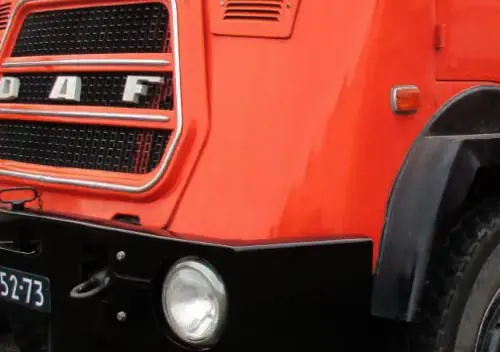
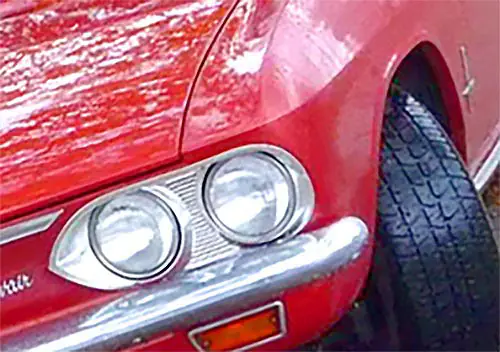

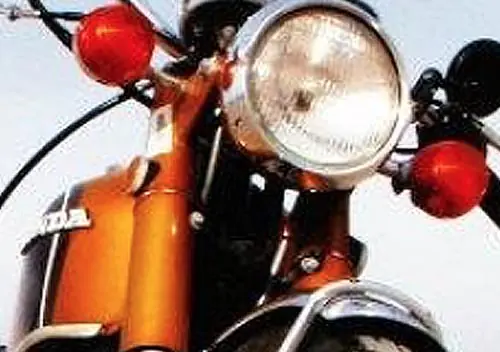
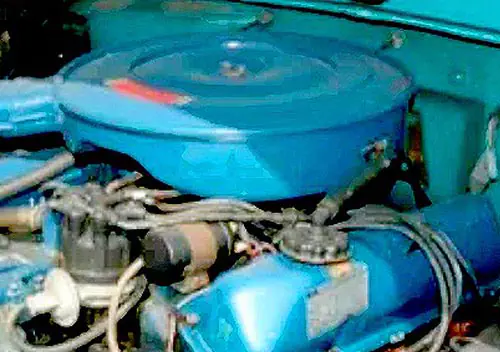



My nominee for worst overhangs. I’m no math major, but I’m coming up with a 48.68% overhang ratio for the 1993-1997 Trans Am. With a 2568mm wheelbase, and a 5004mm overall length.
BINGO! As I said, it was getting late last night. And as I also said, OHR is only one part of the story; the Firebird’s is excessive, but it does carry it better than the Mark VI, IMHO.
I think the Mark VI looks worse than any of its overhang near-competitors because it has egregious overhang both in the front and back, and it’s a very boxy design with a big garish area of sheetmetal protruding on both ends. The more rounded/tapered shapes seem to carry it better.
I think this is your winner:
http://www.cargurus.com/Cars/1970-Plymouth-Superbird-Pictures-c9366_pi13943965?picturesTabFilter=EXTERIOR
I banged on this drum with the 91 Formula CC but a slope nose of the Firebird’s magnitude dictates a long front overhang. Move the tires any further forward and say goodbye to suspension travel.
The picture of the Caprice and GM is interesting to me, it just looks like GM sat the body farther forward on the frame trading less front OH for more rear. Some of that may be exaggerated by the fact that one is 4dr and the other 2dr. Personally I prefer the long hood short deck styling so I guess that is one of the reasons I prefer the looks of the Panther vs the B, that and the droopy butt on the B. The vestigial fins on the C’s do make the car look much better.
Adding a couple more inches of wheel base and moving the front wheels forward on the boxes would have come off looking too much like the aftermarket Caddy conversions or the original Seville with just too much distance between the front wheel and the door. The early Seville just says wheel base length just to say it is there and not to give more room to the passenger.
The TA as well as all the F-bodies of that era look like caricatures, with length just for lengths sake. On a luxury car is is forgivable and even expected to a point but on a pony car not so much.
As far as the Panther front OH in general I’ve never quite understood why they kept so much on the Aero cars. It does look like there is less but on the other hand they tucked the engine up tight against the firewall and a V10 drops right in behind the radiator in the stock position. In front of the radiator there is another foot or so of empty space. I think Ford should have not wasted the money on the 1 year only frame stretch for the 02 L versions and saved the money for a more thorough redesign in 03. Put the CV and GM on the TC wheel base and trim the excess off of the front of the car to keep it the same or shorter in length. Add a couple of inches to the standard TC wheel base and offer an L version too. That way there would have been only 3 of many things that instead they tooled up for 4 versions and they would have saved enough money between that and not doing the L cars for 02 to have payed for new front sheet metal.
“… or the original Seville with just too much distance between the front wheel and the door.”
Too much distance? That’s crazy talk! Pushing the front wheel forward on the Seville was a huge effort and is what made the car such a design standout. In fact Audi redesigned their transaxle to allow this to happen on their FWD platform cars because ordinarily only RWD can push the wheel forward and have a short front overhang.
Old post, but I didn’t think it was a ridiculous amount of effort to push the front wheels forward on the mid 70s Seville. It was that way because it was essentially a Chevy Nova. That’s why they all had vinyl tops, to hide the weld seam where they doctored the roof.
I’m not sure that is correct; I’ve seen many 1st gen Sevilles without vinyl tops. It was a different roof stamping from the X-body variants, AFAIK. The vinyl top to hide roof surgery was used on the mid-seventies Jaguar XJ coupes, as is noted here: https://www.curbsideclassic.com/blog/cc-capsule/cc-capsule-monday-morning-rarities-jaguar-xjc-the-british-personal-car/
Ok doing a little more digging, I found it was just the first model year they doctored a Nova roof. Because they were rushed into production. By the second model year they had their own roof stamping.
I had to run the numbers for the Box CV and B
Caprice 212.1″ l 116″ wb 45.3% OHR
LTD 209″ l 114.3″ wb 45.3% OHR
So the only difference is that GM put the body (and engine) farther forward on the chassis moving the OH to the rear where it just doesn’t work as well to me.
Eric; GM didn’t push the body forward on the chassis; The GM B-Bodies have a longer wheelbase, and quite obviously several of those inches are in the front, making the front wheels further forward in relation to the cowl and rest of the body.
If anything; GM “pushed” the body back on the (longer) chassis. And Ford pushed the Panther body forward, resulting in more front overhang. The rears of both the GMs and Panthers are about the same; no discernible difference.
I was in a hurry since the wife was finally ready to go NOW. What I was trying to say was GM pushed the cabin forward within the body. That dictated pushing the engine forward which also pushed the front axle forward. With the design of the SBF and the need to use the double hump pan Ford had to keep the axle back so the cross-member could clear the oil pump. Which personally I think was for the best since the Panther has similar OH front and rear while the B has more OH in the rear which makes the droopy butt even more pronounced. So you could say the downsized Bs were one of the first cab forward designs. Not to be confused with the windshield forward Chrysler designs.
What an interesting research article. I had never paid much attention at this ratio, but now I think it is a clever way to understand what works when you see a well proportioned car. Having said that, I still think long rear overhangs (like the Caprice there) can work pretty well while long front overhangs are always a bad thing.
+1
Great commentary Paul. This car has so many styling violations… the overhang to WB issue, the too narrow and tall look and the amateurish detailing.
One of the worst is the short, pinched greenhouse. Understandable on the old Ford Skyliner but completely wrong here on an ordinary Coupe.
Two cars that are deserving of your attention that IMHO look awkward. First, the Mustang II, 96.2 in. wheelbase/105in overall length, comes in at 45%, and the ’74-’78 Matador coupe, also at 45%. Both look rather silly with their excessive overhangs.
Excessive front overhang seems to have been a FoMoCo hallmark all through the 1970s. The Mark IV and Mark V always seemed to me to be way too long out in front of the front wheels, but these were far from the only examples.
I tried some other Lincolns:
1970 Mark III 45.76
1972 Continental 43.55
72 Mark IV 45.3
76 Mark IV 47.2
77 Mark V 47.7
It looks like excessive overhang has been a hallmark of Marks going back at least to the Mark III. It was surprising to me that the early Mark IV (sans Federal bumpers) had a lower overhang percentage than the Mark III. Look at the contrast with the traditional Lincoln sedan,
The other surprise to me is how narrow the range of numbers is. The original Intrepid is 43.98, a higher percentage than the 72 Continental.
I knew that the previous Marks were bad too, but not quite this bad. But in relative terms, they wore it a bit better by not being quite so boxy.
The Intrepid, like so many FWD cars, have huge front overhangs. Somehow, that’s a bit more forgivable than on a RWD car.
There were three WBs on the ’77 GM B/Cs… short for the Bs, longer for the Cs (for more rear seat leg room) and on the Cadillacs the longest. Caddys got extra over the F/S Olds and Buick not for even more room in back but for better styling. Only the Caddys had extra WB to push that front wheel more forward and lengthen the hood. That’s why Caddy Brougham front clips look funny on Roadmaster wagons.
Lincoln would have never gone to the extra effort. Makes all the difference in the world on the Fleetwood Broughams.
Using the photoshop, I pushed forward the front wheel,
The car does not look better in the picture below but now a V12 can easily fit in the engine bay!
That looks better but (and I can’t believe I’m saying this) the front overhang is now too short.
One problem is that the windshield is too stiff. Cadillac got the proportions nearly perfect on the black Eldo in Paul’s piece. The ’76 Seville was perfect, period.
Perhaps both the front and rear wheel should be the same distance from the edges of the door.
Well the Triton V10 should fit right in w/o stretching the engine bay or moving the radiator. Yes it would need an electric fan and the truck intake is too tall to fit under the stock hood but length wise it should be fine as is I know it is on the Aero Panthers.
If you squint a bit, the LWB Mark VI almost looks like a Mark II
Whoa! Went too far there. How about you split the difference?
How about the other extreme?
Citroen DS: 190″ TL, 123″ WB = 35% OHR
Mini: 120″ TL, 80″ WB = 33% OHR
Good call! I was thinking about that too as I was falling asleep.
Yes! It would be difficult to top the original Mini for lack of overhang.
Daihatsu Mira 2006
Length 3395 mm
WB: 2490 mm
OH: 905
905/ 3395: 0,26
Luckily I had this in front of me while reading the article: http://flic.kr/p/d8YobS
I’ve been thinking the other extreme as well. The current US-spec Mitsubishi i-MiEV has small wheels literally at the corners: OL: 144.7″, WB: 100.4″ = 30.6% OHR.
How about postwar American CC cars? (Not counting the latest world cars like Ford Fiesta’s 37%.) Leaf springs contributed to overhang even in the compacts.
Can you beat the original Corvair? 180″ long, 108″ wheelbase: 40%.
Yeah, leaf springs dictated a fair amount of rear overhang at least traditional, parallel, semi-elliptic if you wanted a good ride with a fair variance of loads and some reasonable anti hop and anti dive characteristics. That dictates a fairly long spring with the axle in the front of the spring center.
“No one copies the French”. but the statement about FWD vehicles having their front wheels set far back (Eldo design analysis) does get refuted in Citroen’s Traction Avant and DS. All it takes is to- copy the French-and put the transmission ahead of the engine.
As for the Trans Am, wonder how it woulda looked with Mini sized 10 inchers up front or as the F-1 experiment Tyrrell P34 & paired 10s right up front – still allowing for susp. travel under a low fender line.
Couldn’t resist. I got 44.6% for the ’72 Imperial 4 door. (The ’73 adds bumperettes that make it longer, but have no real effect on visual proportions.) Seems like an appealingly low ratio, even with the extra front overhang Imps had over NYers.
Greenhouse-to-total-length ratio would also be a telling stat. IMO, fuselage C-body coupes just didn’t have quite enough roof to look right on the massive lower bodies.
The beige ’80 MGM above looks like a significantly bigger car than the Mark, partly because it has more roof. Oops.
Agreed on the C Body Mopars. IMHO the only coupes that look “right” are the ’69-’70 Dodges. The rest, especially the ’71-’73 Dodge & Plymouth coupes, well, yuck.
I felt sure my Crown Vic wagon would have to outdo the Mark by a little in length, and of course it has the same wheelbase. But no — according to the specs I’ve been able to find, the length of the wagon is exactly the same as the “personal luxury coupe.” Incredible!
Toyota Van: OL= 175.8″. WB= 88″. OH= 87.8. OHR= 87.8/175.8= .499
Also, too, Really High Centre of Gravity.
Toyota Hiace van: very low centre of gravity. An intersection safety advertisement here shows one being hit in the side it slides on two wheels the lands on 4
“Van” was Toyota’s distinctly uncreative North American market name for the late ’80s LiteAce-TownAce. Different beast from the HiAce. I’ve driven both a bit. I agree the HiAce would be hard to tip over, though mostly because of the slow geared steering.
Your wrong,try a low mid mounted powertrain and decent design
The huge front overhangs of the 1977 LTD II and Thunderbird (and presumably of their Mercury twins) led me to these stats:
215.5″ length, 114″ wheelbase
215.5 – 114 = 101.5
101.5/215.5 = overhang ratio of 47.1%
Not an exceptional value among other 1970s big-bumper Fords. Still, the front overhang of the LTD II/T-bird is probably greater than that of any other 47%-plus car because of its long-hood, short-deck proportions.
if you like the long hood short deck style of ride , this customized Lincoln is just for you!
Please call George Baris and bring in your old Lincoln to cut and weld. A Jaguar V12 or Viper V10 will be fitted free of charge .
Nice! Almost RR-ish.
In case you are a Mopar purist and do not want to put your V10 Jewel in a Ford, we can also do the job on your Cordoba.
If you make the tail longer, it would look like a Studebaker Gran Turismo.
If you are still lamenting the demise of Studebaker, we can do a GranTurismo job for nostalgic folks out there, this is an extensive body job as the trunk shortening will not suffice, we propose you to keep the length of the car intact and increase the wheelbase!
My little french beastie has lots of front over hang however there is nothing of substance or weight ahead of the crankshaft all the powertrain weight is between the axles so as not to contribute to understeer, THE most successful WRC car ever was built on this platform, so dont bring your bmw to a cornering contest with this.
This is the final version of Chrysler Gran Turismo (or Hawk)
Longer wheelbase and longer trunck , overall bigger car than the original Cordoba
As a defender of overhangs, let me present the 1983-1986 Thunderbird/Cougar
197″ overall length – 104″ wheelbase
overhang length = 93″
93/197= overhang ratio of 47%
That’s right, one of the most attractive and well proportioned designs of the 80s has the same ghastly OHR as the mark VI! Clearly there’s a lot more wrong with the Mark VI’s design than the overhangs.
Out of curiosity I did a photochop with a Mark V and VI scaled to size and a Mark V “downsized” to the VI wheelbase. All I did was squish the image horizontally and crop in the non-compressed wheels/openings of the original image. All of the proportions end up exactly the same except for one, the greenhouse. And funnily enough that’s the exact area I find the most awkward on the Mark VI, and it’s even more apparent from front/rear views where the OHR is obscured.
True about the aeroBird. And you’re right, it’s not just about the overhang alone. A substantial part of it is that these Lincolns have a very wide and heavy front end, whereas the aeroBird had a pretty gracefully pointed beak. That makes it look lighter up there, in anything but a perfect profile shot. And even then, it doesn’t look quite as heavy.
The shrunk down V shows the VI had pretty much the exact same proportions as it, the only significant difference is the steeper rake on the windows, which do help.
XR7Matt – nicely done! This confirms what I thought, that the chief problem with the Mark VI isn’t the overhangs,but that the windshield and c-pillar are too upright. The greenhouse could also stand to be a bit longer, and the problems are exacerbated by the fully framed doors. These are the reasons that the very similar Cordoba works much better on a slightly shorter wheelbase.
Sometimes there’s a fine line between formal and clumsy.
I think the point about the greenhouse is maybe as important as the overhang ratio. If you were to take that same Mark and move the front windshield forward a slight amount without changing anything else I think its looks would improve considerably. The first thing I have always noticed/faulted on that design was that the greenhouse looked so stubby. If it had a better proportion to the rest of the car I think the whole car would ‘smooth’ out. JMHO.
I always thought the late Pinto wagons were on too short of a wheelbase for their length.
180.6″ OAL(’79-80 models) – 94.8 WB” = 85.8″ TO -> 47.5% OHR.
Compare that to 163 – 94 = 69 -> 42.3% OHR for the Pinto as first conceived (’72 coupe) and
173.6 – 98 = 75.6 -> 43% OHR for the sedan, 160.1 – 98 = 62.1 -> 38.8% OHR for the hatchback version of the current Fiesta.
I’d wager that any two-door Gran Torino and/or Ranchero is the most overhang. In the latter the seat is literally in the middle of the wheelbase with almost equal overhang front and rear…I took a pic recently thinking that very thing. Will try to post later.
Peugeot 407 Coupe has a very long front overhang, but its short rear overhang gets its overhang to length ratio down.
Length: 4815mm
Wheelbase: 2725mm
Ratio = (4815-2725)/4815=43.4%
The MKS looks ridiculous if you’ve ever parked next to one, I’ve never seen a car with such a high belt-line. It makes the car look large from a distance but up close it looks very odd.
Here’s a pic I did of the Fleetwood with the rear wheel corrected, I think it needs to be under the c-pillar to really look right. Another model I think could’ve used a longer wheelbase was the 78-88 G-bodies, especially the sedans. 108″ always seemed to push the limit for me as far as calling it an intermediate.
Agreed – I think 112″-113″ is the sweet spot for an intermediate sedan. Chrysler had it right with the split 108″-112″ wheelbases for the F and M body cars.
A vast improvement.
I really miss rear overhang. I think the lack of it is what makes modern luxury cars look so stubby, along with them being too tall.
There’s nothing wrong with modern Cadillac styling that wouldn’t be fixed by a few extra inches at the rear, IMO. Not everything has to be proportioned either like a FWD econobox or a Mustang.
You sleep?
Thanks for bringing this to my attention. I never noticed it, and thought the Mark V was a pretty decent car for the times. Oy vey another childhood memory slashed to pieces….
I’m not so good with the math stuff, but I recall the 2nd gen Lumina having a huge front overhang, but the compact rear cancels that thought….
Well I’m disappointed: my 2008 Mazda 6 wagon (JDM-spec) had the most ugly front overhang ever, yet the OHR is only 43.05%. It’d be interesting to come up with a calculation showing front overhang as a proportion of something – there must be some way to explain to car companies why their designs are wrong!
Your car shares its design with the Ford Mondeo which apes the peugeot 407 it share a diesel powertrain with and the car works. It was designed b4 Ford and Mazda divorced.
Yes – the Mondeo front overhang can look a bit awkward too, but not as bad as the 6 – must be in the finer details! The 407 certainly has quite a nose on it though! I had to give the Mazda back to the boss anyway, so I’m back to looking at my old Laurel – with its neatly balanced proportions and no wacky overhand lol!
Useless trivia or secret design rule? From the photos at the beginning of this article: on the Mark VI, the E-Body Eldorado, the GM B-Body, the Box Panther, and the Cordoba: If you extend the angle of the windshield downward it comes very close to intersecting the center of the front wheel.
1949 Veritas- The genesis of overhang
My word, that’s a spectacularly aesthetically-challenged vehicle… I thought it couldn’t get any worse but then I found the frontal shots on Google, not to mention the zebra-trimmed windscreen pillars… *shudders* It does sound pretty nice on the YouTube video of it though.
That Veritas isn’t factory. It’s a Spohn body. They did wonderful things on prewar Maybachs, but were hurting after WWII. They took the only path that could keep them open, making dream cars for American Servicemen stationed in Germany who had more money than taste, and were enamored of the idea of their own version of the Buick LeSabre showcar. This was considered an odd bodkin in its day, and is now, at best, a curiosity. I saw it at Hershey 3 or 4 years ago just before it was auctioned, and it was wonderfully ridiculous… but not so’s you would want to own it. Attached is what the factory Veritas looked like, showing the wonderful half-moon vent properly echoing the shape of the prow of the car.
Another argument in favor of long overhangs is turning circle,
shorter overhang means longer wheel base and wider turning circle.
A Citroen DS has no overhang and a very long wheel base, just do not try to make a
fast U-Turn in narrow streets of Paris.
Overhang has long been one of my obsessions, but I think it’s important to distinguish between front and rear overhang. Front overhang is usually bad, and rear overhang is usually good (or at least “classic”). The only car I can think of that manages to shatter the rule and still look amazing is the Citroen CX.
Totally agree re the CX! Actually, the 80s Audi Quattro coupe had an enormous overhang, but it somehow looked fine too. Not as good as a CX though!
I can think of many cars that shatter that rule. Long front overhang and short rear overhang is pretty much a mandatory trait in Mid engined sports/supercars. From the Berlinetta Boxer to the Ferrari 458
No way I’ll ever equate front overhang = Bad. No way no how I’ll ever be convinced a Leaf is better proportioned than this…
Overhangs are GOOD.
I stopped for a kai in your neck o the woods the other night. Putaruru is a friendly little burg they dont mind if you doublepark 22metre long trucks beside the car spaces there, that fish and chip joint opposite the BP is a goldmine I double parked my Scania next to a cop flick on the hazards sweet as.
It’s how we roll in the South Waikato Bryce! Truckies have been double-parking there for as long as I can remember – it’s so wide there’s no reason not too. The police station is out the back behind those shops. Last time I double-parked there was in the 90s, explaining to a constable why my Mk 1 Esky had a blown taillight or something (I don’t remember, but there was no ticket involved). I pumped gas at that BP a long, long time ago. It used to be the Todd Motors dealer back in the 70s – the huge covered area beside it was the car yard. When my Poppa bought his 1936 Dodge (that I owned until the late 90s) back in August 1950, it was delivered there to the BP (or Europa as I think it was then). The Z just down the road from the BP was the Toyota dealer my Dad started his mechanic apprenticeship at in the early 70s. The National Bank used to be next to the Datsun/Nissan dealer, and GM was next door but two to the bank, back towards Tokoroa. Small town memories of dealerships that once existed eh! Nice Scania too!
Its a swap truck everynight it leaves the Bay its twin leaves Auckland and they swap drivers, Very clever trucks 3 transmission programmes depending on terrain, I recorded 64metres of braking last trip north between Napier to Hamilton and the first 130kms is mountains and gullys 23Tonnes payload so not full but nicely heavy about 42 allup. The supermarket next to the Z was where I used to swap with Hookers you can get 2 Btrains in there. Tokoroa is halfway Napier-Auckland for some reason Auckland truckies dont get very far south Ive had to swap at the Red Fox before now. It can be fun being a casual relief driver.
Bryce, could you explain what are the two little lights under the headlights? Thanks!
Fog/daytime lights like a Volvo these are lit if the engine is running it has driving lights in the sunvisor too great lights its virtually daytime for visibility
Cool, thanks. Another one for you: it looks like there’s a bar and grille that protect the lower half of the windshield. I’m familiar with bars that protect the nose against moose/kangaroos, and grilles that protect the windshield against angry protesters, but what about the ones on your truck?
That is a bug/stone guard
That is interesting having a reefer on a curtain truck, I bet it is really hard to keep cool with the curtains open like that. I thought it was a PITA to service reefer units on a truck with a flat roof or on a trailer but that looks like a total nightmare.
Mitsubishi 3000GT: 97.2 in. wheelbase, 181.1 in. length results in 46.3% OHR. Not the worst, but pretty close!
But with the curvature of the front and rear it doesn’t look too bad. If it was flat-sided like the Lincoln….!
a comparison of overhangs
My 68 Electra 225
224.9 inch length 126″ wheel base
+1 Excellent! Current Smart Fortwo: 106.1″ length, 73.5″ wheelbase
No denying that your 68 Duece and a Quarter has lots of overhang, But… Your pic is obviously photoshopped. FOUL!!!
So your car is two-and-a-bit Smarts long.
Does that make you twice as Smart? 🙂
100% overhang.
I stopped to think for a minute about a “likely candidate,” and immediately conjured up the 1978 Ford Thunderbird:
114″ WB
215.5″ Length
47% overhang
I always thought the Mark VI was the most gorgeous of all the Marks ever created. I guess what it comes down to it each persons taste.
The 1968 HK Holden Brougham was a HK Holden Premier sedan, with an extended boot/trunk added in an attempt to give Holden a car to compete against the Ford Fairlane in the “executive” market. With all of the extra overhang, I thought the Brougham might have a high OHR, but it is only 0.42.
It’s funny. They looked so oddly-proportioned back in the day, but now I realise they were just following big US car proportions, where a long trunk like that was normal.
The MKVI (MK6) ’80 – ’83 really grows on you if you own & drive one as i have with many. The best was a 15mi agean green (teal) 2dr with teal velour, p.roof & computer dash. On fresh michelins this tight, low mi. mark drove “like a hot knife thru butter”. Compared, the cordoba is a unibody and the eldo is a fwd GM – enough said….
I present my 1978 Ford Ranchero GT.
220.1″ OL, 116″ WB. That provides for an overhang ratio of 46.3%.
Most of that overhang is in the rear though. Compare it to a Mark VI parked diagonally over a sidewalk and you can immediately tell the difference.
http://img842.imageshack.us/img842/571/iuej.jpg
How about the Buick Reatta? With a wheelbase of 98.5″ and length of 183.7″ you have 85.7″ of bodacious Buick poking out past the wheel centerlines. If my math is correct, we have an OHR of 46.4 % (rounding up).
It was basically a contemporary Buick Riviera with a shorter wheelbase and even more front overhang. I wonder if the Reatta beats the Firebird in that dimension?
Let’s not forget the Ominrizon 024 & TC3 of the late 70’s into the 80’s
TL=172.73 WB=99.10 42.7% gawky looking little things!
Long overhang good. Mark vi hate bad.
The 90s Oldsmobile 88 is pretty decent too, 45%. I have had lots to people comment on the front overhang on mine. The Oldsmobile 98 was even slightly more at 46%
Threw this together quickly, but wanted to represent my thoughts on the Town Car of that era… It always looked like a trolley to me.
Holy mother of glockenspiel’s what Lincoln was doing in the ’80s was savage! Barbaric and savage! It’s beyond belief that those rinky-dink Lincoln’s from that era actually sold.
The only advantage of owning a Lincoln back in the ’80s was that they were pretty solid mechanically compared to the rubbish Cadillac was producing, and certainly better than the pos K-car New Yorker’s and the rest of the pseudo luxury K-car lineup.
Lincoln really lost their way a long time ago. They reaped the success of the homely, and gang-banger, NFL, NBA favorite, the Navigator, for a while, now no one wants Navigator’s anymore; and Lincoln ignored their passenger car line up far too long focusing on stupid SUV’s and the LOL Blackwood truck. OUCH!
Now Lincoln has a fleet of largely unwanted products. One bomb after another. Who could ever have imagined that back in the ’50’s and ’60s when Lincoln was one of the big kings of luxury in the auto industry. The innovation, quality and beauty apexed with the ’61 Continental and slowly descended from there.
Say what you will about the lincoln mark vi but it is the most beautiful car ever made. It is perfect in every proportion. Negative feedback not necessary, it won’t effect my opinion one bit.
The Lincoln Mark 6 is one of the most beautiful cars ever made.
The Lincoln Mark6 is one of the most beautiful cars ever made. It’s beauty rival even contemporary style.
Quick ‘n’ dirty wheel base stretch, with a widened C pillar
1971 Stutz Blackhawk/Bearcat: 116″ WB, 227″ OL
OH/OL= 48.9%
I believe the late-1970s models continued to use a GM A-body donor car, but they must have kept using pre-1978 donors until switching to the B-body in 1980. Otherwise, the proportions would really have gotten comical. I can’t imagine how any of these things handled.
You like overhang? How about a Plymouth Superbird.
The 1977-1979 Continental Mark V…..
Overall Length: 230.3”
Wheelbase: 120.4”
Just a hair under 110” of overhang…
OVER NINE FEET of sleek aircraft carrier overhang…
I just saw this ’62 Mercury Monterey on Craigslist and couldn’t help but notice the rear overhang (longer than Ford on same wheelbase, perhaps). The total OHR works out to be 43.8, not quite a contender (due to modest front overhang). But I figure the rear overhang to be about 67″, amounting to 31+% of the total car length. I know we don’t have such a “breakout” statistic for the cars cited/pictured above, but the Merc sure looks like a contender in this particular subcategory (continental kits excluded, of course):
1971 Mercury Grand Marquis. 47.1% overhang on a 2 door coupé that is 19½ feet long. Doesn’t get more outlandish than this, surely? Unless anyone here knows of an even more gigantic road going cruise liner …
1954 Cadillac Eldorado
Wheelbase 129.0 in
Length 223.4 in
42 % overhang
1980 was the down-sized year for Lincoln. The overhang ratio for 1980 is similar to 1979. The proportions of the 1979 Lincolns are better styled even though the overhang ratio for the full-size Lincoln Continental is 45% and the Mark VI is 47 3/4%. The 1980 Lincoln style, while about a foot shorter in length, is boxy by comparison.
I thought for sure my ’97 GTP would win this one. Parking this one in a steep driveway was always a major PIA.
But alas, it did not beat the Lincoln Mark VI, or even some of the other examples cited, including my own Fox body T-Birds… oooh… I should look up my old MN12, but I digress…
196.5″ OAL – 110.5″ WB = 86″
86 / 196.5 = 43.7659%, or just a little over 7/16 the length of the car.
Maybe that low front end had more to do with difficulty entering a steeper driveway…
Thanks to Paul’s handy link, I looked up Automobile Catalog’s figures for the homologated winged Mopars:
1969 Daytona 48.2% (117 wb, 226 long – 109 overhang)
1970 Superbird 47.5% (116 wb, 221 long – 105 overhang)
About where J.P. has the ’77 Mark V.
The Mark may be bad but it wears it well. That and the Cordoba shown above are so good looking to me (just a kid when they were new).
Okay. We seem to have agreed there is a ‘sweet spot’ in the overhang-to-overall-length ratio, and that the Lincoln’s styling went out of our visual comfort zone.
What I’m left wondering is WHY Lincoln did this?
I’m thinking the amount of metal in a body-on-frame design would not be affected by where the front wheels were located. The chassis would (I assume) weigh the same, regardless of how much was wheelbase and how much was overhang.
So what was the advantage?
Did someone at FoMoCo actually like the short wheelbase-long overhang look? I’m aware the Mark VI was on the existing Panther chassis, but to my eyes all the Panther cars would have been improved by having the front wheels a few inches further forward.
My first thought was the 1990-93 Chrysler Imperial, but I forgot about the wheelbase stretch from the New Yorker/Dynasty that rules it out. Still, those front wheels look like they need to be shoved about 8″ forward.
“The Fiberfab Mark VI: build your own Continental on a VW Beetle chassis”!
Interesting!
But put it on a more readily available chassis.
Nothing says hookers and blow like a mark vi.
Overhang? What overhang? DFO
The Mark VI looks better with the full vinyl roof, but very few large coupes were sold that way by then, they were all landau/cabriolet with the occasional hideous fake convertible top.
Our ’68 Electra had only 99 inches of overhang, but they were mostly in the back, so we’d hear the tailpipe scrape the pavement going in and out of Grandma’s steep driveway entrance and her highly-crowned street.
Personally I think the Mark VI is a good looking car. But then I also prefer the Mark IV to the much more popular Mark V. Not that I don’t like the Mark V, but it just looks too big, whether or not it’s actually any longer/wider than the Mark IV it replaced. An imposing car the Mark V, but darn big.
I also preferred the IV to the III, V, and VI. Most Vs had a lot of fussy ornament that early IVs didn’t even offer. I never liked the gills or the boxy greenhouses, to me a bigger defect than the short wheelbase on the VI. The curved A pillars on the IV are a little weird, but they relieve the straightness of the front half, and the whole car has subtle curves and shapes the later ones really needed.
This itty bitty Lincoln ain’t ‘nuttin compared to what Ford woulda, coulda done.
Ford designed its 1973 full size cars fully aware of coming bumper standards for 1973 (front) and 1974 (rear).
You’d think with a fresh design, Ford would not have become famous for its steel I-beam rams with built in park bench.
I’ve come to a better understanding of where Ford was coming from after seeing a video on the development of the 1973 LTD and Marquis. Ford was taking a serious look at incorporating crumple zones to better protect passengers, not just a better bumper protecting headlights and body work.
They approached crumple zones by looking at longer overhangs, and some pretty extreme designs were played with. It’s quite apparent this exercise made it into production to a degree.
Now THIS is serious overhang…..
Just saw this 1966 Olds Starfire and instantly wanted to grab an advil. That’s quite a hangover,
Here’s the Starfire…
What a profoundly ignorant way of judging car design. You sound mini- minded / moronic!! The Mark Vi is vastly more attractive than the gigantic Mark V & designers downsized it to perfection. I owned a Mark IV Gold Edition, Mark V Givency Edition, & Mark VI Bill Blass edition The IV was great, the V was overblown & the VI was so awesome that I have just bought one, in retirement, to relive the glory days of my luxurious youth. The all electronic dash, & lux appointments out classed the ROLLS ROYCE ( I briefly owned) of that time. In the outdated & dowdy( ugly by comparison) Rolls ,I felt cringy- so sold it after 7 months & bought a finer Mark VI. BILL BLASS EDITION that vastly surpassed that Rolls by leaps & bounds……JR